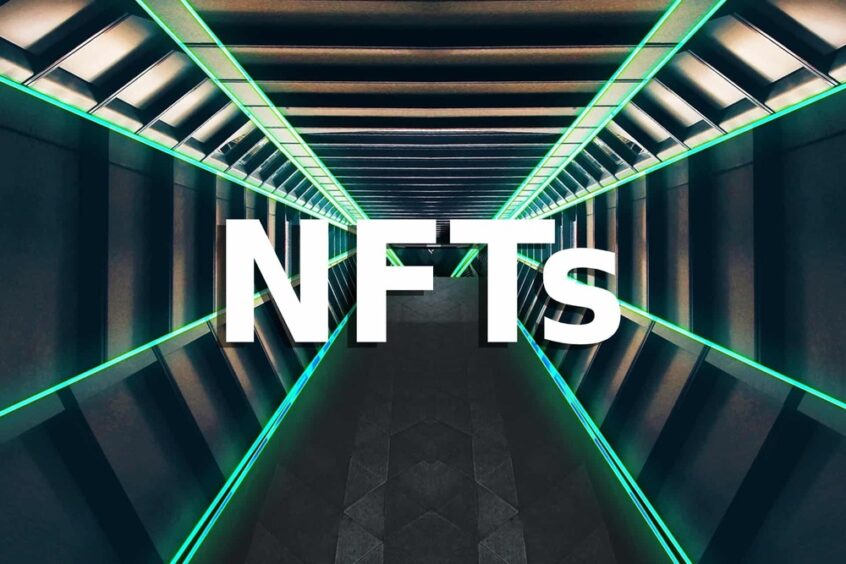As of 2021, the most outstanding expectation was created in the creation, sale, and purchase of NFTs globally recognized artists of traditional crypto Exchanges found these digital assets the perfect way to exhibit their designs.
These artists did not expect that their works would be valued for such high sums, which caused surprise and enormous satisfaction, seeing that they could obtain large sums of money without having to exhibit their works in an art gallery.
Although many positive aspects emerged from this new digital investment tool, negative factors have also emerged that globally affect the world’s population, including the counterproductive effect on the environment.
NFTs impact just like cryptocurrencies
Let us remember that cryptocurrencies have caused a stir in terms of the energy consumption required by the mining process; that is where the environmental impact of these digital financial instruments lies.
To the point that countries like China, where the most significant number of Bitcoin mining procedures were carried out in the world, due to the impending electrical wear and, among other factors, decided not to allow cryptocurrency mining.
That is why the miners try to migrate to where the costs for electricity consumption are lower, considering ecological alternatives that allow them to carry out this activity without harming the environment.
Now comes a similar situation with NFTs. They generate a significant impact on the environment due to the high electrical consumption involved in creating Blockchain blocks.
This type of platform, made up of a network of equipment that generates a high electrical consumption, contributes to the wear and tear on the environment, which suggests future generations and the resources they will inherit.
Many have been the environmentalists who have come out in defence of the ecosystem due to the harmful effect of NFTs, generating great controversy to the point that committees have been created to evaluate in a certain way the environmental impact and the possible solutions to this new problem.
The artists who have benefited from such a novel proposal to create digital art do not imagine that the carbon footprint that their works have left on the planet could become as polluting as the magnitude of their prices.
Generating a non-fungible token at the blockchain level can represent an equivalent more significant than 200 kgs. Carbon is about the energy consumption required to create an NFT.
The creation, auction, and commercialization of NFTs constitute a set of data that, due to its decentralized nature, makes them authentic, safe, and impossible to duplicate; since this platform offers this benefit to all its users, what is not said is the impact this generates.
Although NFTs and cryptocurrencies are considered highly polluting, it is more their blockchain platforms that require high energy consumption to solve calculations that allow the creation of the blocks that make it up and, in turn, the emission of high amounts of heat.
In short, these are the relevant aspects that make NFTs a constant threat to the environment.
Who impacts digital art or traditional art more?
Although it is a somewhat tricky comparison, it is essential to highlight that traditional art is not far from much different in terms of the environmental impact that NFTs can produce, which is why before judging a new way of contributing to art, we must analyze traditional forms.
Many will wonder how traditional art could cause damage to the environment; it is not the fact of capturing a work of art; it is the number of resources required to produce said work, such is the case of the necessary inputs.
The production of these resources requires the participation of industries that develop chemical products and the extraction of precious stones or minerals, without leaving aside several procedures that consequently require high consumption that affects the ecosystem.
Finally, it has always been sought as a measure of environmental preservation to reduce the carbon footprint. That is where proposals should be made that benefit this type of digital art proposal while considering ecological protection.
Conclusion
As a result of so much controversy, there have been many proposals that have emerged in favor of the environment, where not only digital artists, investors, and exchange platforms benefit, but the most important thing is to create awareness regarding the care and maintenance of our environment. planet Earth.
It is there that companies like Binance Smart Chain and the International Association for the Advancement of Innovative Approaches to Global Challenges (IAAIGLOCHA) have joined forces to create initiatives that contribute to the environment.
Want more news from the Tech world for Gaming Peripherals to Hardware Click Here







